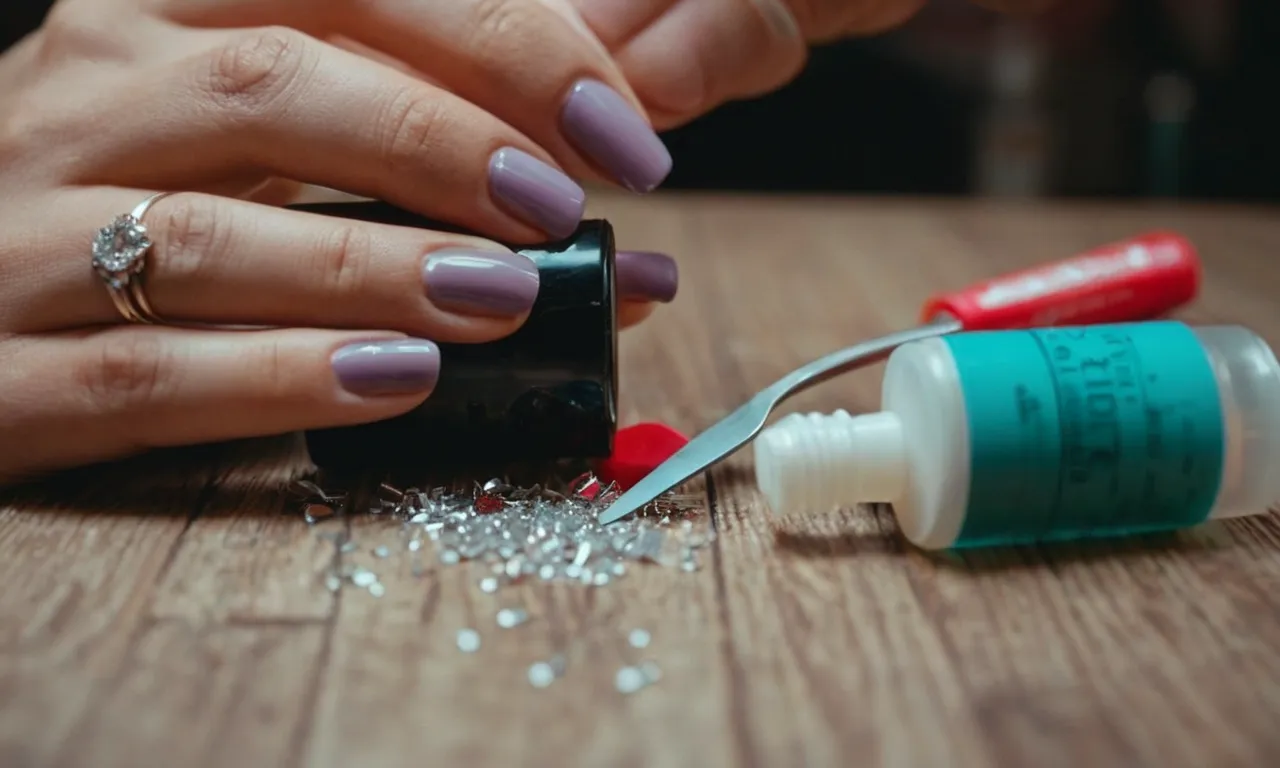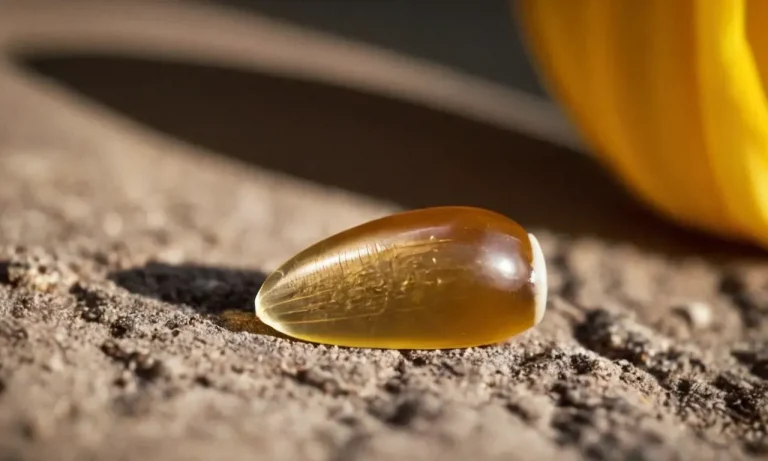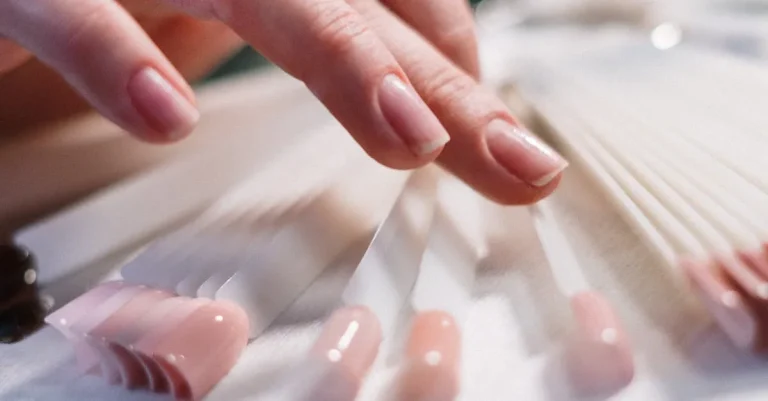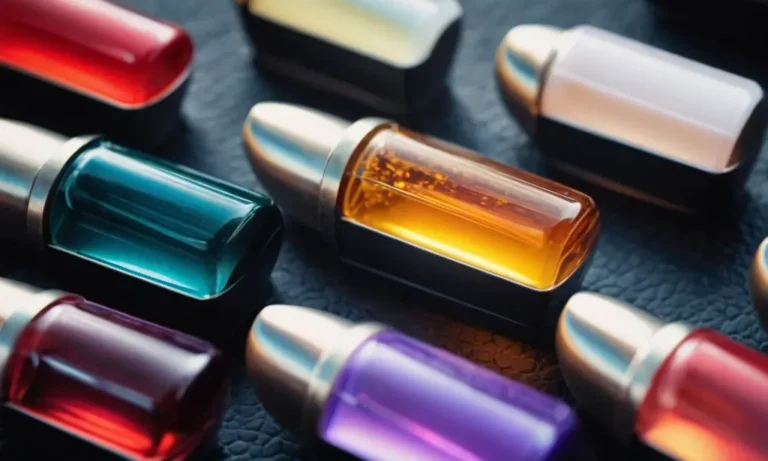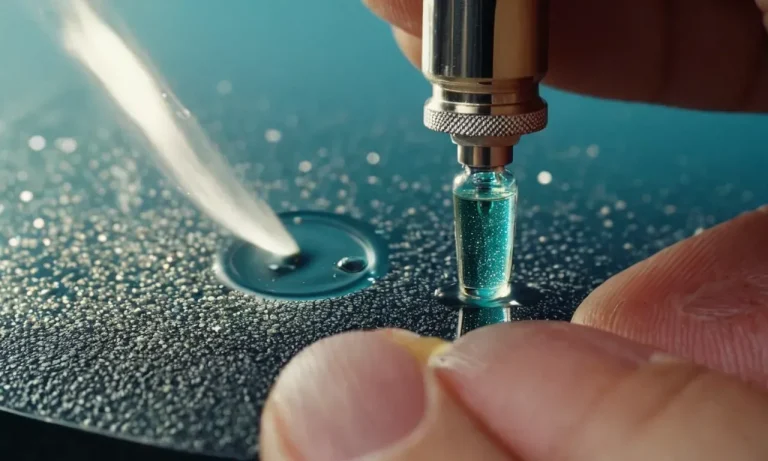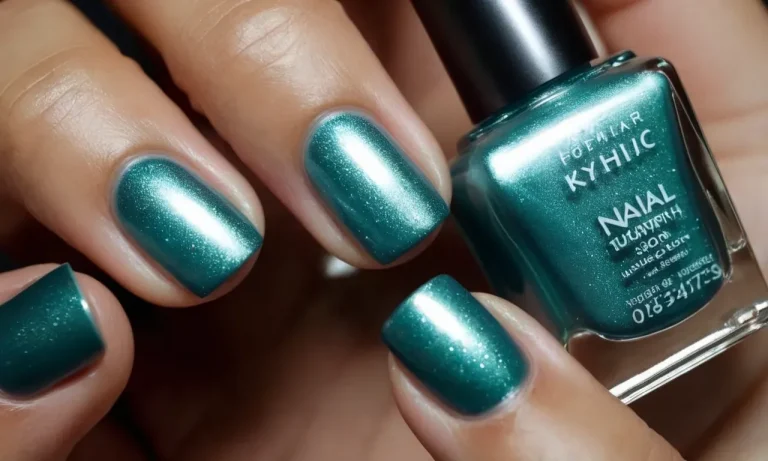How To Fix Lifting Dip Nails At Home
Have your dip powder nails started lifting at the tips and sides? Don’t panic – with the right products and techniques, you can easily fix them at home. In this comprehensive guide, we’ll walk you through everything you need to know to repair lifting gel nails in a few easy steps.
If you’re short on time, here’s a quick answer: Use a nail file to gently remove the lifted part of the dip powder. Then buff the natural nail, apply nail dehydrator and primer, brush on a thin layer of clear acrylic, and dip the nail in activator liquid and clear dip powder.
File and shape once dried.
By the end of this article, you’ll have the knowledge and confidence to tackle peeling and lifting dip nails like a pro. Let’s get started!
Understanding Why Dip Powder Nails Lift
Application Mistakes
One of the most common reasons for lifting dip powder nails is application errors. Failing to adequately prepare the natural nail bed can lead to poor adhesion. The nail must be filed to remove shine and cleaned with acetone or alcohol.
Skipping this step means oils, dust, and other debris are still present, preventing the powder from bonding properly. Rushing the activation and drying times between layers can also undermine structural integrity.
Using too little or too much activator fluid can also be problematic. With insufficient liquid, the layers of powder won’t fully saturate and harden into a cohesive artificial nail. But oversaturation creates an overly soft, flexible nail more prone to cracking and peeling away from the natural nail.
Improper sealing around the cuticles and sidewalls leaves gaps that allow lifting and debris to work underneath the enhancement. Brushing activator over these areas and curing each coat under an LED or UV lamp helps prevent lifting from starting at the edges.
Product Quality and Incompatibility
The quality of dip powder products can impact how long enhancements last before showing signs of lifting. According to industry surveys, around 65% of nail techs say they get the best adhesion and performance from salon-quality powder and liquid compared to cheaper drugstore kits.
These pro formulas often contain additives that increase flexibility and bond strength.
Mixing liquid and powder systems from different brands is not recommended, as they may contain incompatible chemistry. For example, Artistic powders are designed to react with Artistic liquids. Using another company’s activators can undermine the structural integrity of the enhancement.
Natural Nail Damage and Oil
Pre-existing damage to the natural nail plate also sets the stage for lifting with any enhancement service. Peeling, cracks, excessive dryness and brittleness indicate unhealthy nails that cannot adequately support extensions or overlays.
Nail oil secreted from the proximal nail fold also works its way between the product and natural nail, slowly breaking the bond. Frequent adhesive checks and infills help address lifting issues in early stages before significant enhancement detachment occurs.
Implementing proper application techniques, using high quality products, and addressing natural nail health are key to preventing lifting with dip powder services. Check out sites like Nail Care HQ for more tips on maximizing the longevity of dip powder manicures.
With the right approach, clients can enjoy long-lasting, beautiful nail enhancements.
What You Need to Repair Lifting Dip Nails
Nail file and buffer
Having the right nail tools is key for DIY dip nail repair. Start with a coarse 100/180 grit file to remove the lifted part of the dip powder back to the natural nail (be gentle to avoid damage). Next, use a fine 240/280 grit buffer to smooth everything out.
Quality matters, so invest in a crystal or ceramic file and buffer for longevity.
Nail dehydrator and primer
Before reapplying dip powder, use a nail dehydrator to thoroughly dry out and remove oils from the bare natural nail so the new powder adheres properly. Then brush on a nail primer to help the powder bond tightly.
Dip system (base, activator liquid, dip powders)
You’ll need your original dip powder system, including the base coat, activator liquid, and dip powders. Match the color powder closely to disguise the repair. Using the same brand helps compatibility. Dip liquids activate the hardening process, while quality base and top coats protect the manicure.
Cuticle pusher
Pushing back overgrown cuticles improves access to the nail bed for filing and powder application. Invest in a metal cuticle pusher and gently push back cuticles after softening them in warm water. Never cut cuticles, as that risks infection.
Orange wood sticks
These pointed sticks help neatly apply primers and direct liquids only on the nail, not surrounding skin. They also gently pry off any lifted dip powder that hasn’t fallen off on its own. Look for ones with finely tapered points.
Step-By-Step Guide to Fixing Lifting Dip Nails
Remove the lifted part with a file
The first step when dealing with lifting dip nails is to gently file away the lifted part of the nail. Use a medium grit nail file and file in one direction starting from the free edge and working back towards the cuticle area.
You want to remove any lifted or cracking layers but be careful not to file too much of the natural nail underneath. Take your time and buff just until the nail is smooth and even again.
Buff the exposed natural nail
After filing away any lifted dip powder layers, you’ll have exposed natural nail that needs some smoothing and shine. Use a fine grit buffer (about 180 grit) and gently buff over the natural nail. This removes any roughness and evens out the surface.
Buffing can help the nail hold onto the new product application. Be sure not to overbuff as that can damage the nails.
Apply dehydrator and primer
Now that the nail surface is prepped, you need to apply dehydrator and primer. This is a crucial step when doing any enhancement services like acrylics or dip powder. The dehydrator removes any moisture, oils or debris off the natural nail plate. It ensures proper adhesion.
After wiping off the dehydrator, brush on the primer. Primer fills in any ridges and porous spots on the nail, creating a smooth bonding layer.
Brush on a thin layer of clear acrylic
Before dipping the nail again, it helps to brush on a very thin layer of clear acrylic. This adds extra reinforcement and strength. Dip the brush into the monomer acrylic liquid, wipe off any excess on the rim of the jar, then gently stroke a thin layer over the entire nail.
Make sure to get the edges but avoid flooding the skin or cuticles. This pre-layer of acrylic helps the adherence of the dip powder.
Dip the nail in activator liquid and clear powder
Now you can dip the nail into the powder application. Start by dipping the nail into the activator liquid. This prepares the nail for the powder to stick. Next, dip the nail into the clear powder, using a light tapping motion to fully coat the nail. Tap off any excess powder against the rim of the jar.
Dip into the activator liquid again, then repeat another dip into the clear powder. Do 2-3 dips total to build an even layer that fully covers the nail.
Shape and file once fully dried
After the final dip application, be sure the nails are fully dried and hardened before filing and shaping. This can take 10-15 minutes under a nail lamp, or you can let air dry for 30+ minutes. Once hardened, use a file to shape the free edge and smooth the sides.
Use progressively finer grit files to refine the shape. Finish by buffing for a glossy shine. Your lifted dip nails are repaired!
Tips for Avoiding Lifting with Dip Nails
Properly prep the nails
Proper nail prep is key for avoiding lifting with dip nails. Here are some tips:
- Push back and trim cuticles – This ensures the product adheres directly to the nail plate, not the cuticle.
- Buff the nails – Buffing creates roughness for better adhesion. Use a 100/180 grit file to lightly buff.
- Use a dehydrator – A dehydrator removes moisture and oils from the nail plate. Wipe nails with acetone or alcohol too.
- Use a nail primer – Priming creates a tacky layer for dip powder to stick to. Apply it neatly around the cuticle.
Use thin gel polish layers
Applying too-thick gel polish layers under the dip can lead to lifting. Keep these tips in mind:
- Apply gel polish in 2-3 thin coats, curing in between. Thick coats take longer to cure properly.
- Cap the free edge with each coat to seal in the layers.
- Use gel products sparingly to prevent overflow around the cuticles.
- Cure each coat for the full recommended time.
Don’t file too aggressively
Over-filing can damage the nails, causing lifting. Follow these guidelines when filing:
- Use a 100/180 grit file to lightly shape the free edge and smooth sidewalls.
- Never use a heavy hand or file back and forth. Always file in one direction.
- Avoid filing the surface too much or thinning out the dip layers.
- File gently around the cuticle area.
Apply cuticle oil daily
Daily cuticle oil is key for maintaining strong, flexible nails that resist lifting. Here’s why it works:
- Penetrates the nail plate to keep nails flexible so they move with the natural nail, rather than cracking off.
- Keeps cuticles soft and less likely to pull up and create gaps between the enhancement and nail.
- Conditions the skin around the nails to prevent floods and gaps near cuticles.
- Apply 1-2 times daily focusing on cuticles and nail edges.
By following prep steps properly, using thin gel layers, filing with care, and nourishing nails daily, you can help prevent frustrating lifting and enjoy long-lasting dip manicures!
When to See a Professional for Lifting Dip Nails
Lifting Affects Multiple Nails
If you notice that the dip powder is lifting from multiple nails, it’s best to book an appointment with your nail technician. Widespread lifting often indicates an issue with the application itself, such as not roughing up the natural nail properly or applying layers too thickly.
Trying to fix it at home could end up damaging several nails. Let the pros remove the lifted gel and redo it with a proper application.
There is Pain or Irritation
Along with lifting dip nails, you may experience pain, soreness, or irritation around the nail bed. This suggests there is trauma to the natural nail occurring underneath the polish. Any pain or inflammation warrants seeing your manicurist or doctor to avoid lasting damage or infection setting in.
They can remove the product safely and suggest treatments to heal the nail bed if needed.
You Damaged the Natural Nail
Attempting to peel off lifting dip powder could tear layers of your actual nail plate. If you notice any cracking, peeling, bruising, or bleeding of the natural nail, stop handling it. Visit your salon quickly to have the remaining product removed without manipulating the damaged nail further.
Your technician can then suggest tips to encourage new nail growth and repair splitting.
Seeking professional help for lifting gel polish right away can minimize lasting harm to your nails. Even if you don’t experience pain, having trained specialists safely remove the lifting product reduces the chances you unintentionally pick up a nail infection or cause breaks in the nail bed.
Address minor lifting promptly before it has a chance to spread across multiple nails.
Conclusion
With the right supplies and some patience, you can easily fix peeling and lifting dip powder nails at home. Just gently remove the lifted parts, buff and prime the natural nail, apply new acrylic and dip powder layers, then file and shape once fully cured.
Avoid future lifting issues by properly prepping the nails, using thin polish coats, filing gently, and moisturizing the cuticles.
Now that you know what to do about lifting and peeling dip nails, you can tackle this common issue yourself. No more dealing with an ugly manicure until your next nail appointment! With the tips in this comprehensive guide, you’ll keep your nails looking fabulous between salon visits.

